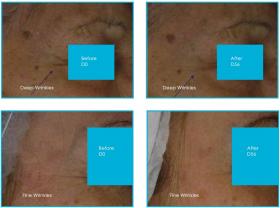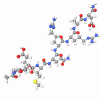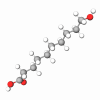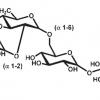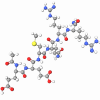In our dermis, the lower structural layer of the skin mainly lies the distinction between youth and senescence. The alteration in such dermal architecture causes the major and most significant visible changes between young and aged skin. A new brand technology now exists to help aged or damaged skin appear more replenished, elastic, and smooth.
Renaissance has been designed both to bind to fibroblasts and to promote cellular proliferation. These two properties along with the formation of a new scaffold for tissue regeneration and ECM formation are of great help for skin wound healing and tissue regeneration.
Renaissance is a carefully designed complex of peptides that acts in two ways. It builds a 3D regenerative matrix that improves the ECM properties and, at the same time, contributes to sending signals to cells in order to activate cellular functions such as proliferation, differentiation, and cellular multiplication. This process contributes to the regeneration and reconstruction of new skin.
Active peptides incorporated in the Renaissance complex, penetrate into the skin forming a 3D network that as a regenerative matrix completes the natural regeneration, substitution, and reconstruction processes of the skin. It provides support to cells, mainly to fibroblasts, so that they can proliferate, differentiate, and multiply themselves. This activates simultaneously the production of all important proteins in the skin, like the different types of collagen, elastin, and proteoglycans, that contribute also to the formation of the 3D matrix.Ingredients
Renaissance's peptides can form autonomous three-dimensional networks in the skin in combination with the existing one under natural physiologic conditions at low concentrations. It has been found that cells trapped inside the matrix created by the complex ingredient have remained viable for weeks as they have kept proliferating so indicating that the cellular cycle does not stop and increased cell survival.
Renaissance preserves the extracellular matrix and induces fibroblasts mainly to the production of elastin, proteoglycans, laminin, tenascin, and collagen type I, III, IV, VIII. It focuses on the growth of new skin, reinforcing regeneration, in both processes: normal or premature aging, and lesions caused by stress. The goal is to restore damaged mature skin, linked to the inherent regenerative processes in which the behavior of normal mature tissue is involved.
The investigations suggest that skin loss or lesions occurring during early or natural aging can be corrected by regenerative mechanisms. It begins with the spontaneous formation of 3D scaffolding of peptides as a result of hemostasis.
Naturally, this 3D scaffolding serves to organize and revert the aging process by means of several functional activities. The initial activation of Renaissance shoots up the activation of growth factor and other morphogens that are deposited inside the 3D scaffolding of natural peptides. Adding to the production of an immobilization factor, this scaffolding contains peptides of cellular adherence that show a specific ligament in a variety of integrin receptors found on the surface of the fibroblasts.